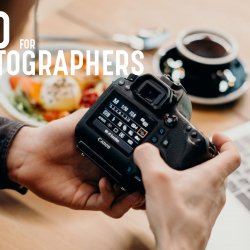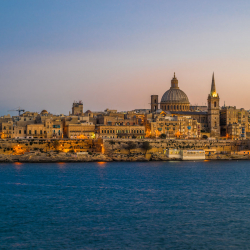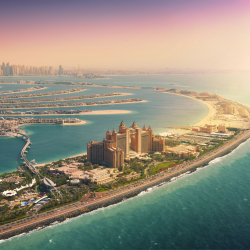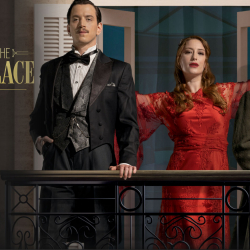New York Resort Photographer interview
New York resort Photographer Best of 2013 Interview
Antonio Cuellar is a New York resort Photographer who accomplished a huge technical feat in picturing Cartagena, Colombia, at its most beautiful — from dusk to dawn. During a shoot spanning more than 100 days, Cuellar directed multiple assistants to illuminate bits of each scene using artificial, continuous lighting. Multiple image layers were superimposed digitally for optimum lighting effects. Antonio is a New York resort Photographer who started this personal project in 2011
“I was determined to capture 200 images of the old city and its surrounding fortifications,” explains Cuellar. “This was tested many times due to challenging logistics and high production costs. As we progressed, city officials became increasingly interested in my work, ultimately assigning a government official to help scout locations and coordinate logistics.”
ASMP: How long have you been in business?
New York resort Photographer Antonio Cuellar: Since 2007.
ASMP: How long have you been an ASMP member?
AC: Close to three years.
ASMP: What are your photographic specialties?
AC: I’m an Architectural photographer and my main focus is hotels and resorts.
ASMP: What do you consider your most valuable tool or piece of equipment?
AC: Equipment is always secondary to me. But in order not to avoid the question, I’d say my SEKONIC C-500R color meter and my gels. What I like to call my most valuable asset would be my constant in conformity with my images and my desire to get better. I like my creativity to dictate whatever tool or piece of equipment is necessary and not the other way around.
ASMP: What is unique about your style/approach or what sets you and your work apart from other photographers?
AC: In and of itself, the field of architectural photography is already an art form very different from other photographic fields. Most of the time I am not dealing with moving subjects, which allows me to focus on composition and lighting.
I could go on and on, explaining how I understand the components of a building and its architecture, but the reality is that even though this is relevant, sensitivity and imagination play a much bigger role. Framing the camera an inch to the left or to the right, choosing to light a certain area of the image or not, or waiting for the right time of day to shoot an interior are all decisions that can make a huge difference.
ASMP: Your personal project Behind the Walls consists of 200 images of the old city of Cartagena, Colombia. What was the inspiration for this project? Why did you choose these words for the title?
AC: I had the pleasure of visiting Cartagena in 2009 for a friend’s wedding. I fell in love with the city and just knew I had to spend time photographing it. The title behind the Walls has a double meaning. If you have a chance to visit Cartagena you’ll soon realize that most of its Architectural beauty is inside the old city, which is surrounded by walls. These walls were built mostly in the 16th century to protect the city from pirates. Most of my images are focused on the city inside the walls, with the exception of some fortifications outside the walls.
Additionally, due to an economic boom, a lot of the houses inside the city walls have undergone a major restoration, due to a surge in the boutique hotel industry. Most of these boutique hotels consist of six to 10 rooms and therefore outsiders don’t have access to peek inside unless they’re booked for the night. My images take you inside those walls as well.
ASMP: Are you of Colombian heritage? How much time had you spent in Cartagena before embarking on this project? How much advance research and planning did you do before arriving in the city and starting to shoot?
AC: Yes, I was born in Cali, Colombia, and both my parents are Colombian. I moved to Boston as a teenager before moving to New York. I grew up in Cali, and I remember visiting Cartagena on family trips when I was a kid.
As a New York resort photographer I took a paying job in Cartagena working for a hotel. This is how the whole thing started. I took a pre-production trip in order to scout locations, apply for permits and search for security and assistants. I focused on landmarks during my first three trips. Applying for permits for the landmarks was straightforward since landmarks are often used for film and TV shoots and the process is pretty standard. The curveball came when I explained that the photo shoot was taking place after hours and that I would need to close down some streets.
ASMP: What equipment and software did you use to create “Behind the Walls?” Do you generally work with the same gear or does this vary on a project-to-project basis?
AC: Behind the Walls was shot with three Canon 1DS Mark III cameras and Lowel hot lights. I used three cameras simultaneously in order to be able to capture dusk shots more efficiently. I used Aperture software and I shot everything tethered to my 17-inch MacBook Pro. Most of the postproduction was done in Photoshop. The gear does vary, as I use medium format cameras on New York resort Photographer jobs that require them and I also use strobes for most of my daytime shots, but Behind the Walls wasn’t shot during the daytime.
ASMP: The images from Behind the Walls are composited from captures created over several hours using intricate lighting over a darkened scene. Do you use any means to rough out composites as you work, so that you can evaluate what you’re getting?
AC: Yes, I do. I always shoot tethered and I have ways of preselecting the better images in Aperture. It makes the postproduction easier. This is something as a New York resort Photographer
ASMP: Many people like photography because one can create an image in a fraction of a second, yet you often choose to spend hours doing so. Why? What do you get out of prolonging the image making experience?
AC: Behind the Walls is a photography collection shot at night and dusk. When shooting daytime assignments I can also create images in a “fraction of a second.” The decision to shoot in daylight versus at night is made after extensive scouting, planning, and discussion with the client, in an effort to determine what is best for them. However styling and preproduction are an important part of my job, so it’s never really a “fraction of a second.”
Some of my night photography shoots take a long time, depending on the expanse of the scene being captured. The San Felipe fortress was the most epic shot in the book. We started shooting the front of the castle at 1 a.m. and worked on lighting the scene until 5 a.m. Then we waited for dawn to get the morning sky in the mix. We were very lucky on that particular morning.
ASMP: Please briefly describe your workflow for this project. Approximately how much time did you spend in post-production per image? Did you do all the post-production yourself or did you outsource any of this process to others?
AC: I did all the postproduction. It is very hard for me to outsource the postproduction because of my unique workflow. I’ve tried outsourcing it in the past, but I found myself spending more time preparing the files and explaining the work to the editor than actually doing the work myself. The time I spend on an image varies. For example, the San Felipe fortress consists of 137 layers so it took an entire day and a next-day revision. Some of the interior shots took as little as one hour in post. I’ve gotten into the habit of always doing next-day revisions for everything.
ASMP: You have a behind-the-scenes video of the making of an image from Behind the Walls on Vimeo. Who shot the video? For what percentage of your shoot time did you have a videographer working? Did shooting video cause any disruption to your photography process?
AC: The video was shot by local film house called Cartagena Film Academy. They were a big part of the project and provided some rental equipment, assistants and the video crew. The video guys in the crew were very professional and never got in the way. They were involved and passionate about their work and seemed very interested in the project. The project was self-financed, so only 20 percent of the shoot was captured on video. There are many more videos on the way.
ASMP: What has been the reaction to the video? Has this been useful as a marketing tool in promoting the book?
AC: The video has been an incredible tool and worth every penny. Most people are familiar with what goes into a fashion shoot and the average portrait session, but they’re not at all familiar with an architectural shoot, especially with my approach. By watching the video the images become that much more interesting.
ASMP: Is this video something you share or talk through during meetings with commercial clients, especially prospective clients who may not understand your process and working methods?
AC: Yes, this video is definitely a useful tool to educate clients, especially when it comes to justifying budgets, although most of my clients come from the hospitality industry and are referred to me by word of mouth. I’ve found that most of the work to educate new clients comes from the person referring me and I’m grateful for that.
However, the video for this project was a key factor in getting city officials to become more interested in the project.
ASMP: Many of your pictures from Behind the Walls require a large crew — multiple assistants, generators and sometimes security. What have you learned from this project about being an effective leader? What works, and what doesn’t work?
AC: Being an effective leader starts with good communication skills. This trait is especially important when working with new and inexperienced assistants. Educating them in the process is key to minimizing the element of surprise.
Empowering people, giving them credit when credit is due and rewarding them when they’ve done a good job, is very necessary. Taking the blame for your assistant’s mistake in front of your client creates a sense of unity, trust and helps create the sense of a team.
I believe the most effective way of managing your team is by creating a positive working environment. Being the angry photographer on set does not work. I’ve learned that, by making my employees believe in the high expectations I have for them and my respect for their work, I can bring out the best in them.
To continue reading The New York resort photographer interview please follow the New York hotel photographer interview








